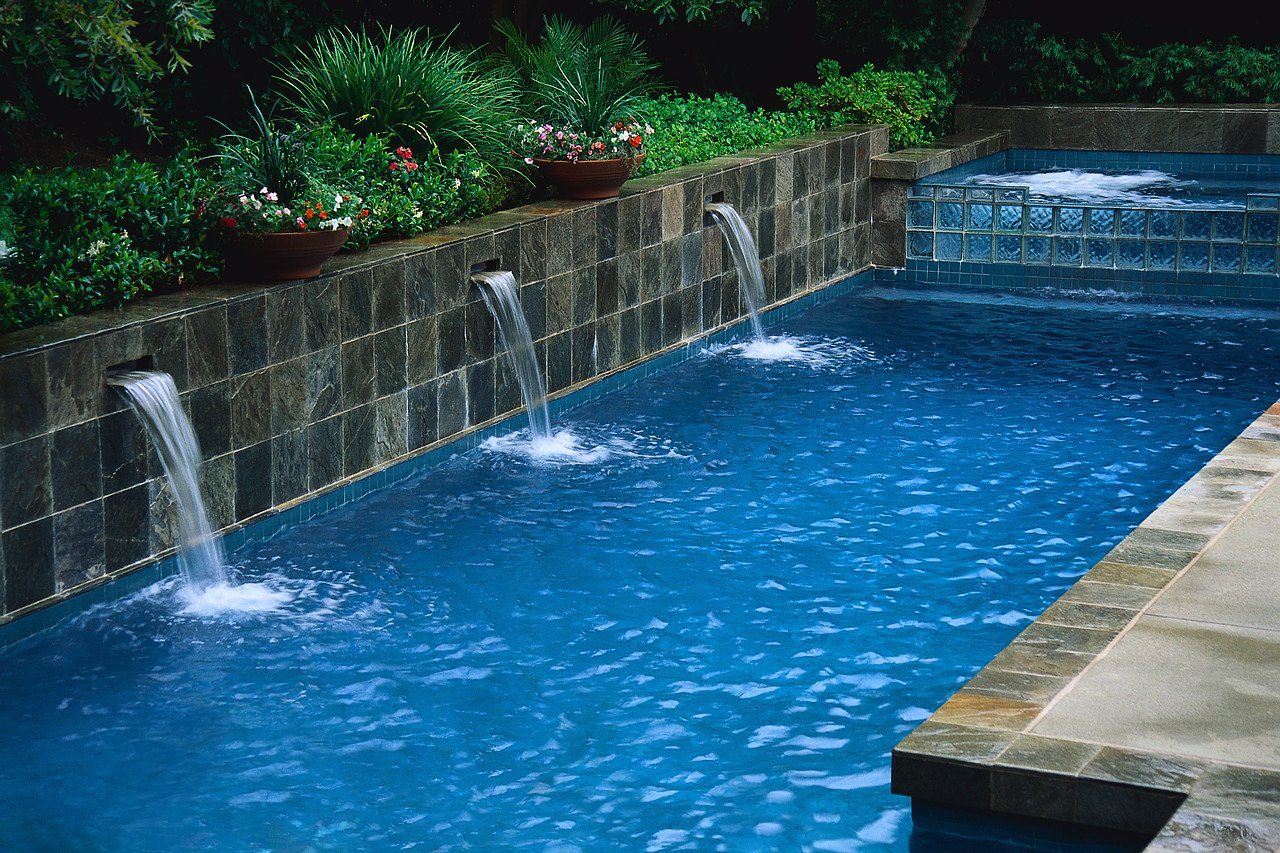WHAT ARE THE DIFFERENT TYPES OF INGROUND POOLS
If you want something cleaner and more reliable than a backyard swimming hole—and more permanent than an above-ground pool—there are four main types of in-ground pools you can consider. Wood is a possibility, but it will have to be built to last, and it will have to be the most efficient material to use. You can also choose from different options for these types of products, allowing you even more options.
There are four types of in-ground pools and it’s important to understand the differences between them. You'll also discover what types of features are available and how long they will last.
Check out these four types of In-ground Pool...
Four Types Of Inground Pool
1. Aggregate Finishes or Concrete With Plaster
Concrete and plaster are the most common materials used for an in-ground swimming pool. They're usually the first materials used to build a residential pool. The reason: Concrete is a material that’s both durable and porous. This allows the plaster-coated shell to hold water, provide stability and strength, and be re-plastered if necessary. This is one of the most cost-effective options available for the skin care regimen, as it will likely never need to be replaced and can easily be kept clean and healthy for years and years.
Once the hole is excavated in the yard, the sides and bottom are lined or framed with rebar. These can be shaped into nearly any conceivable shape imaginable, along with adding steps, ramps, and other features.
A swimming pool shell is made by spraying the finish over the rebar that is placed in the pool. This combination of sand, concrete, and water is sprayed from a hose. Once the cement is dry, you'll use plaster to cover it. Plaster is a combination of cement and marble dust. It's used to make a decorative surfaces like walls, ceilings, or floors. It's not just the pool that’s waterproof, but also plaster. It’s essential for creating the pool’s waterproof seal and is an essential step in the process.
This process lets a contractor decide the size and shape of a pool that will be built with concrete. Most pool builders will use a modern curved pool. This type of pool is less expensive than pools with angular shapes.
2. Concrete and Tile or Stone
Concrete pools are used to create a durable foundation that can serve as a base for other pool finishes, such as tile or stone. Once the concrete pool base has been poured and cured, the pool is covered with a thin-set mortar. This creates a stable surface on which tile or stone can be placed. Make sure to finish the tile before the grout completely cures and hardens. Then give it at least 24 hours to cure before applying a water-proof sealer.
Whether you go for tile or stone for your pool, it’s purely an aesthetic choice and doesn’t really have much of an obvious benefit to the longevity of your pool. Pool drains may start to wear out or chip in between 8 and 12 years, so it’s a good idea to make sure you have your drains professionally checked once a year.
3. Fiberglass
This fiberglass swimming pool comes in one big piece and is delivered to you in the truck, and then it’s put in the hole with a crane. Fiberglass is not the same as concrete, so a customized pool isn’t really possible. Most are ready-made and come in standard sizes. Fiberglass manufacturers are always developing new products to offer to the market. Many manufacturers will offer step boxes, spas, and benches that are already formed.
Fiberglass is a great material for building a swimming pool. It's easy to use and it's very durable. The smooth interior surface makes it hard for algae to grow on it. Fiberglass is more expensive, but it lasts a long time. After 10 to 15 years of exposure to the sun and chemicals, the fiberglass deteriorates and re-coating it is not easy.
4. Vinyl
Swimming pools that are built with vinyl liners are usually supported by metal or plastic frames above ground or set into the excavated hole. A prefabricated pool shell is a great solution for swimming pools because of its speed and ease of assembly. The coping, which is what goes on the top of the vinyl liner, create a finished edge and also acts as the border for the pool deck.
It is important to keep your vinyl in top condition by keeping it out of direct sunlight and water, which can degrade its look and performance. Some vinyl liners are equipped with fungus and UV inhibitors that can increase the lifespan of the vinyl from 10 years to 18 years.
Frequently Asked Questions
Which type of in-ground pool is the least expensive to build?
Vinyl liner pools can be the lowest cost in-ground swimming pool and can be built in any size and shape. Fiberglass pools have the highest upfront cost, but they have the lowest maintenance costs over time. It has certain restrictions on size and you need to order it from them.
Which type of in-ground pool lasts the longest?
Concrete swimming pools are the strongest, most durable of all the in-ground pools. They don't corrode or oxidize and keep their strength for a long time.
What type of pool is the easiest to maintain?
Fiberglass pools are more resistant to algae growth, and they cost less to maintain over 10 years than other types of swimming pools. You don't have to have it professionally waxed, cleaned, or replaced, and it only needs to be filtered once per day.






